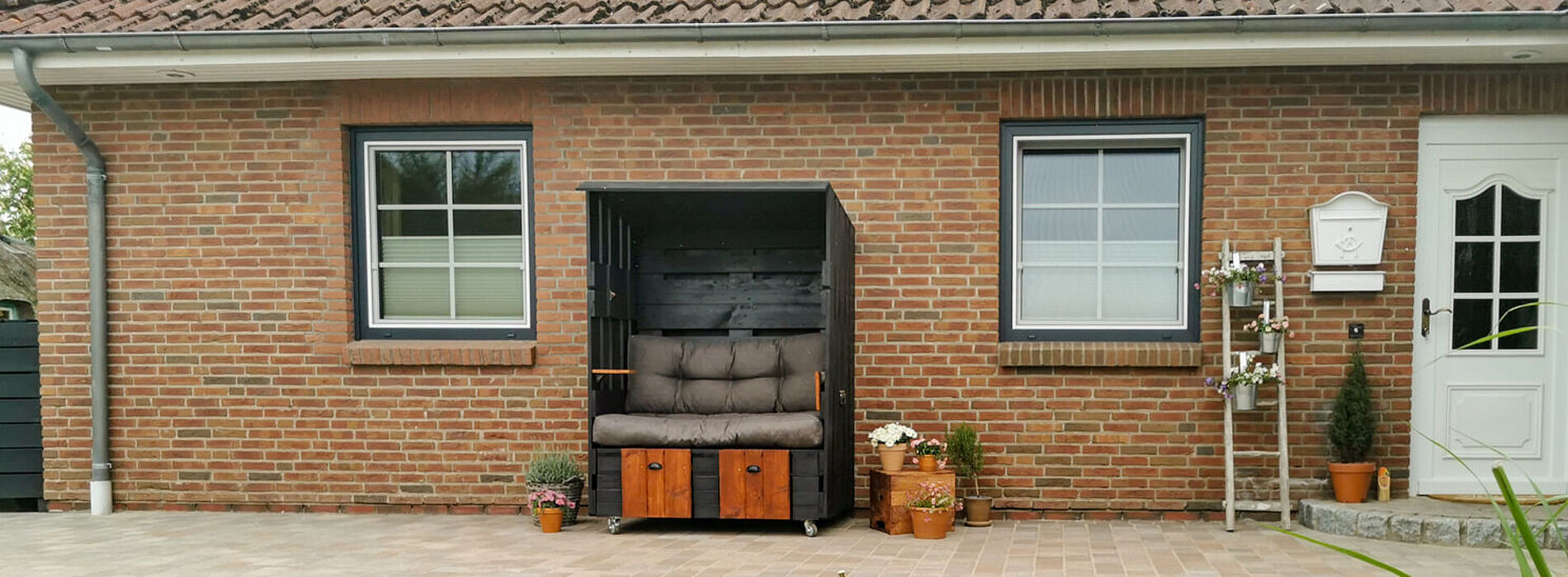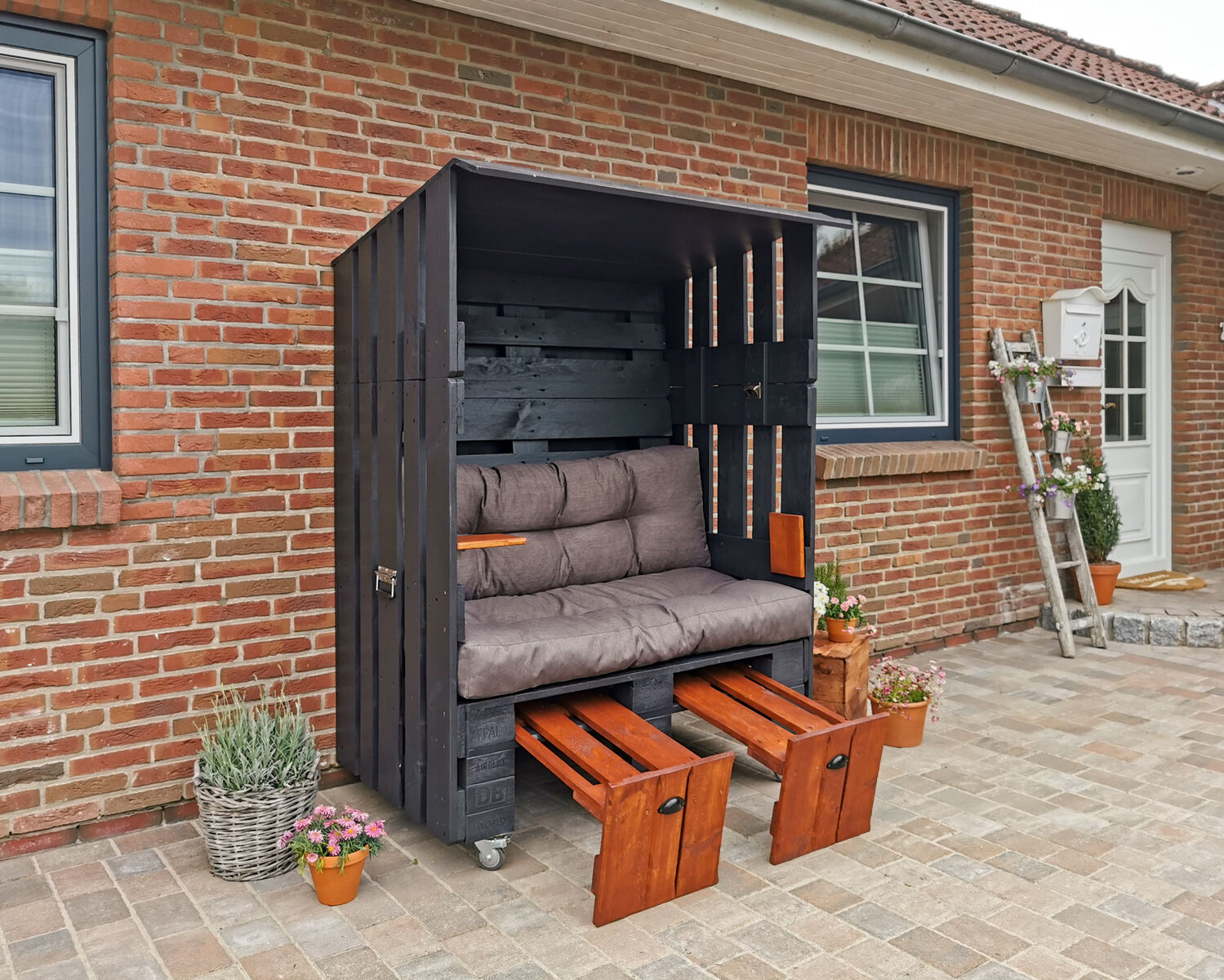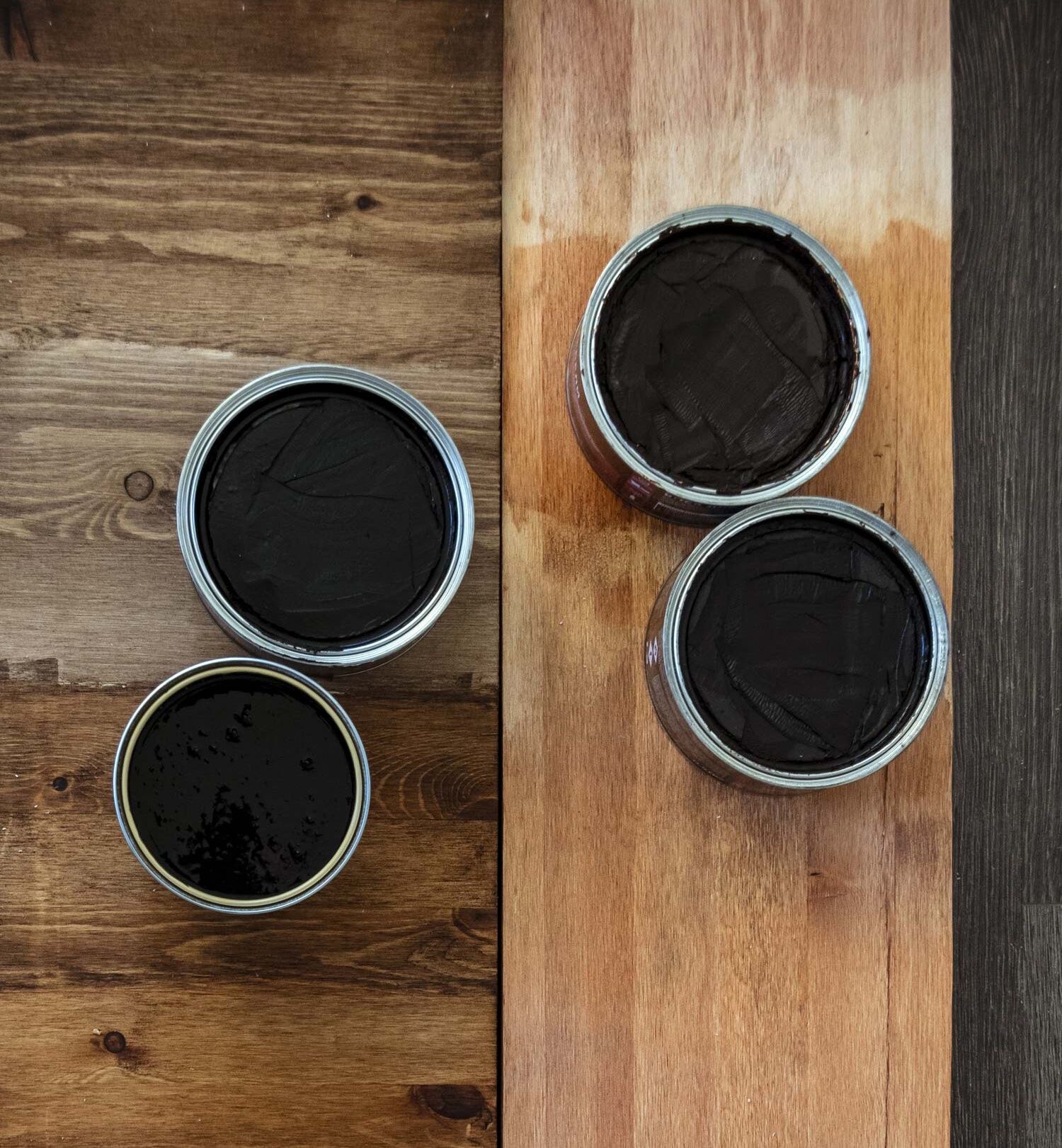Building a pallet wood bench
Sari and Christian from Sari's Garage always have great ideas for furniture made from pallets: This time it's a do-it-yourself pallet wood bench. It will make you feel almost like you're on the beach in your own garden!
Whether you want a show stopper for your garden, furniture for your terrace, holiday feelings like at the Baltic Sea or the combination of sun protection and cosy seating to read a book - with these pallet furniture instructions a very special piece of pallet furniture will be made!









